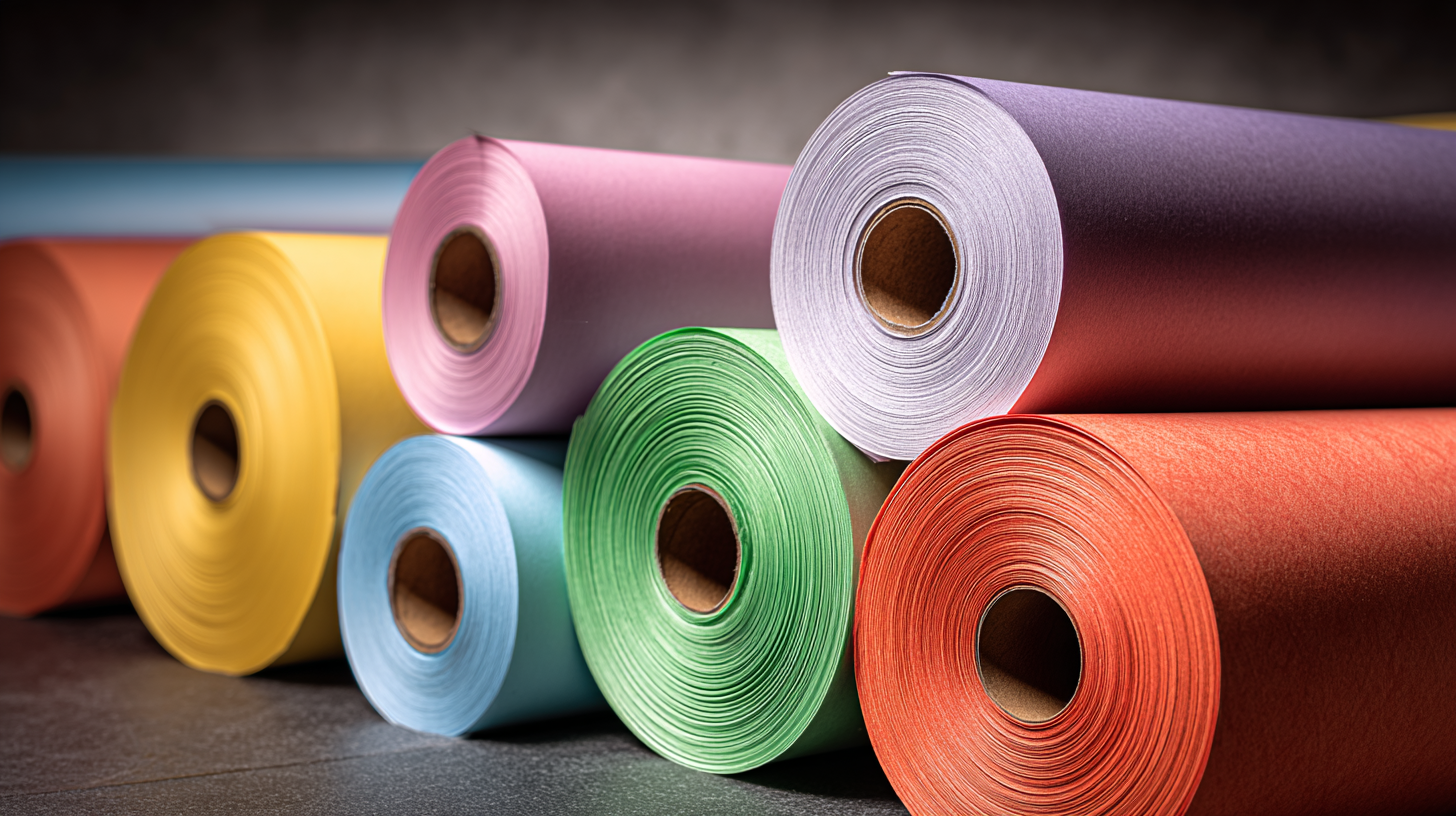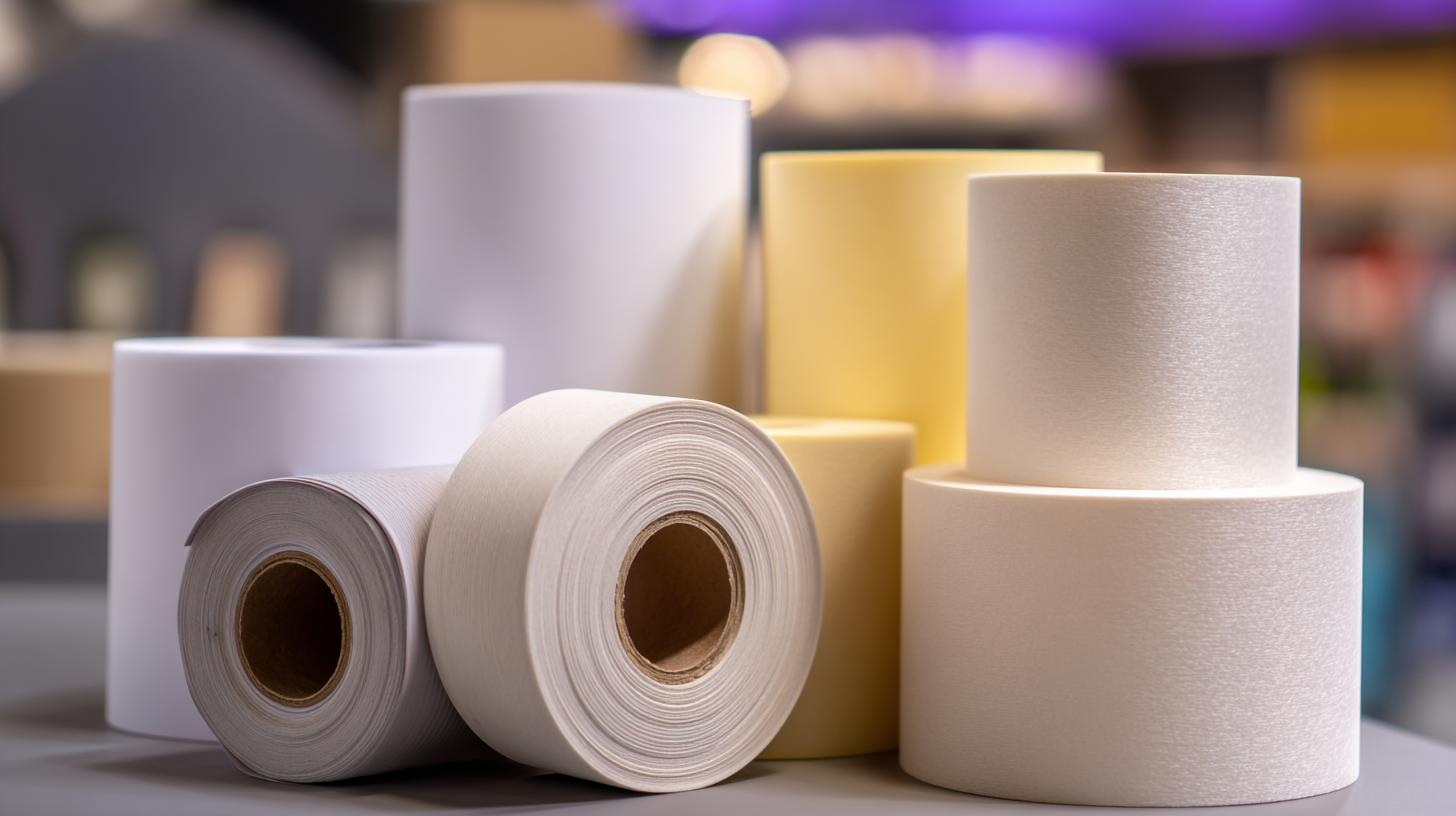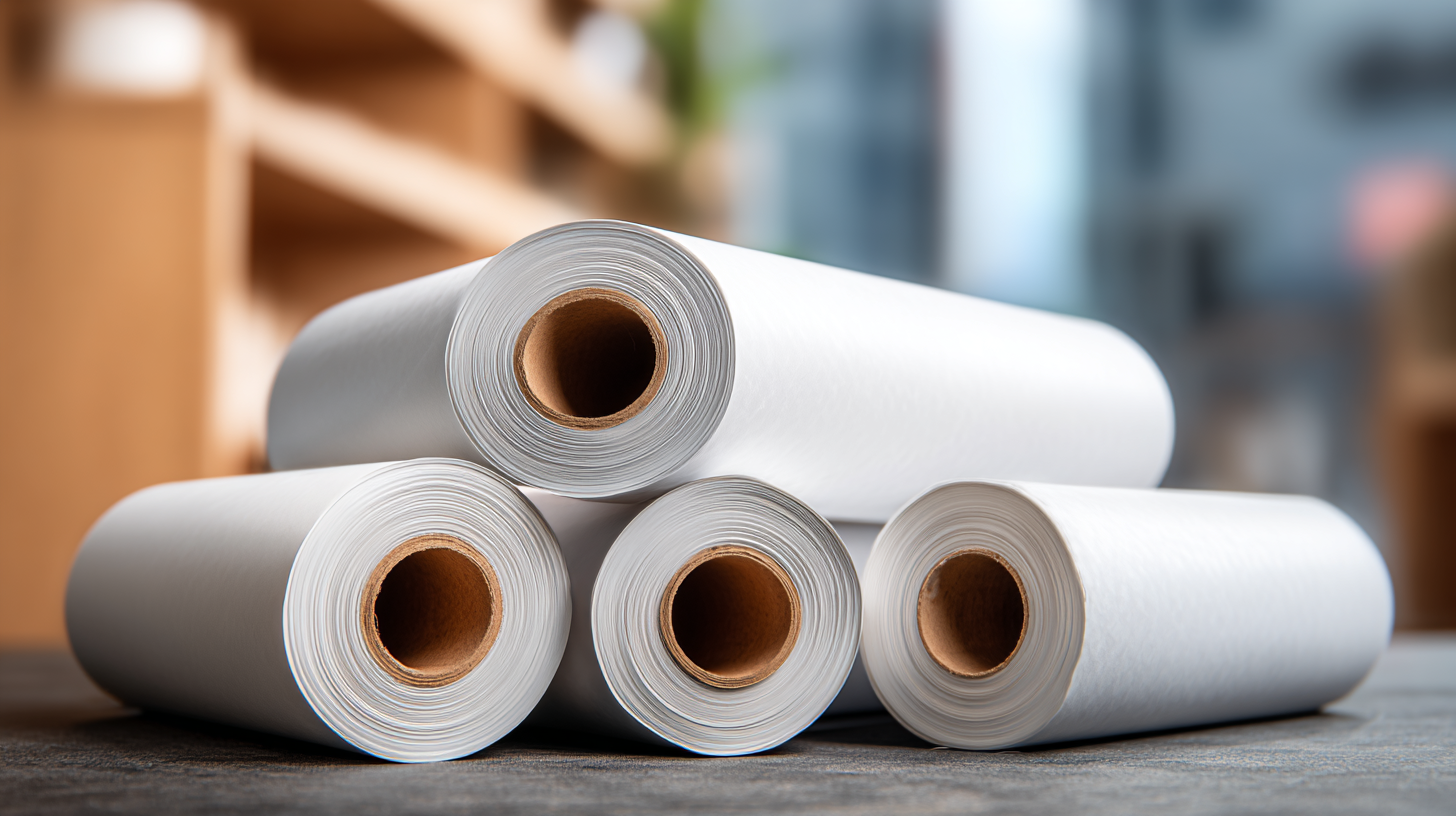In recent years, the global demand for thermal papers has surged significantly, fueled by the expansion of various industries including retail, logistics, and healthcare. According to a market report by MarketsandMarkets, the thermal paper market is projected to reach USD 5.7 billion by 2027, growing at a CAGR of 4.3% from 2020. This rise underscores the critical importance of exploring alternative options for thermal papers, particularly for global buyers seeking cost-effective and high-quality solutions. As the reliance on thermal printing continues to grow, understanding the diverse alternatives available in the marketplace becomes essential.

This blog will delve into the top contenders that can rival conventional thermal papers, highlighting their unique features, applications, and overall benefits, ensuring that decision-makers are well-equipped to make informed choices in this rapidly evolving landscape.
In recent years, the demand for alternatives to traditional thermal paper has risen sharply as global markets seek more sustainable and cost-effective solutions. With environmental concerns at the forefront of consumer choices, manufacturers are increasingly exploring the evolution of various alternatives. These alternatives not only aim to reduce the ecological footprint associated with thermal paper production but also offer potential improvements in durability and print quality.
Among the leading contenders in this market are synthetic papers made from polypropylene and other plastics, which promise greater resistance to water and tearing. Additionally, innovations such as recycled paper products and eco-friendly coatings are gaining traction, allowing businesses to maintain quality while minimizing waste. The shift towards these alternatives reflects a broader trend in the global marketplace, where buyers are prioritizing sustainability alongside efficiency, prompting manufacturers to rethink their production strategies and invest in innovative technologies.

When selecting thermal paper substitutes, several key characteristics should be taken into account to ensure that global buyers make the right choice. First and foremost, the sensitivity of the paper is critical. Higher sensitivity means clearer and more durable prints, making it particularly important for those who require legibility and longevity in their receipts or labels. Look for alternatives that offer thermal sensitivities comparable to that of traditional thermal papers.
Another vital aspect is the compatibility of the substitute with various printers. Not all paper types work seamlessly with all printing devices. Therefore, it is essential to verify that the chosen thermal paper alternative is suitable for the specific equipment being used. This compatibility ensures smooth operation and reduces the risk of paper jams or poor-quality prints.
A practical tip is to conduct a test run with small samples before committing to bulk purchases. This allows buyers to assess the print quality, durability, and compatibility without significant investment. Additionally, consider the environmental impact of your choice; opting for eco-friendly alternatives can contribute positively to sustainability goals while still meeting your business needs.

The future of thermal printing is being reshaped by innovative technologies that promise to enhance efficiency and sustainability in the industry. As highlighted in the recent EIC 2024 Tech Report, the emergence of advanced materials and production techniques, such as 3D printing with fiber-reinforced composites, is set to revolutionize various sectors including aerospace, automotive, and medical industries. This transformative approach not only improves the structural integrity of products but also offers greater customization possibilities, making it an exciting development for global buyers seeking alternatives to traditional thermal papers.
Moreover, the thermal inkjet printer market is projected to experience significant growth, with estimates reaching $4.8 billion by 2032. This surge is driven by continuous investments in research and development aimed at enhancing the capabilities of thermal printing solutions. The integration of smart materials and sustainable practices further emphasizes the industry's shift towards eco-friendliness, aligning with global trends in energy efficiency and resource management. As these innovative technologies continue to evolve, businesses worldwide will benefit from enhanced printing solutions that meet both operational needs and environmental responsibilities.
| Option Name | Thermal Sensitivity | Environmental Impact | Print Quality | Cost Efficiency | Durability |
|---|---|---|---|---|---|
| Eco-Friendly Thermal Paper | High | Low | Very Good | Moderate | Good |
| Black Thermal Paper | Medium | Medium | Excellent | High | Very Good |
| Synthetic Thermal Paper | High | Medium | Good | Moderate | Excellent |
| Water-Resistant Thermal Paper | High | Low | Good | High | Very Good |
| Recyclable Thermal Paper | Medium | Low | Very Good | Moderate | Good |
As global buyers seek alternatives to traditional thermal paper, a comparative analysis of emerging materials reveals promising contenders that could redefine the marketplace. Recent studies highlight the thermal and environmental benefits associated with bio-based insulation materials, which offer a viable substitute not only for thermal applications but also for eco-friendly practices. For instance, hemp-based insulation has demonstrated significant potential, undergoing a life cycle assessment that considers its entire production process—from agricultural growth to manufacturing—exhibiting lower environmental impacts compared to conventional options.
Moreover, the exploration of phase change materials (PCMs) showcases how integrating conventional and innovative materials can enhance refrigeration systems' efficiency. These materials are gaining recognition for their ability to store and release thermal energy effectively, potentially replacing thermal paper in certain applications where temperature regulation is crucial. Utilizing sustainable resources, such as recycled PET bottles in building insulation, also underlines a crucial trend towards resource efficiency in thermal management solutions. Such advances may not only improve performance but also contribute to a reduced carbon footprint, aligning with the growing demand for sustainable materials across industries.
As businesses and consumers increasingly recognize the importance of sustainability, the thermal paper industry is under pressure to adopt eco-friendly alternatives. Traditional thermal papers often contain bisphenol A (BPA) and bisphenol S (BPS), chemicals linked to environmental and health concerns. According to a report by Smithers Pira, the global thermal paper market is projected to grow to $3.8 billion by 2025, driving the need for sustainable alternatives.
One of the prominent eco-friendly options is bamboo thermal paper, which is not only faster-growing than traditional wood sources but also offers a reduction in carbon footprint. A study from the University of California indicates that producing bamboo-based paper uses 30% less water than conventional production methods. These innovations are increasingly appealing to businesses prioritizing sustainability in their operations.
Tip: When evaluating thermal paper options, consider products labeled as BPA-free or made from recycled materials. Look for certifications from environmental organizations to ensure the paper meets sustainability standards. Additionally, explore suppliers who offer green alternatives, as they often provide transparency regarding the sourcing and production processes of their thermal papers.
